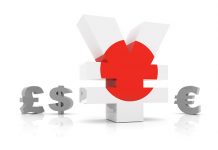Markets
Global markets yesterday again showed sharp swings as investors tried to adapt positions to the developing reflation narrative. European markets took a cautious albeit constructive start. However, trading on US interest rate markets turned very volatile. US yields jumped sharply higher with the 10-y and the 30-y setting new post-corona peak levels at 1.43% and 2.29% respectively. The sharp rise in yields initially caused some shivers on the equity markets. The dollar gained a few ticks. Later, the market again to took comfort from Powell in his hearing before the House confirming that the Fed has no intention to roll back stimulus any time soon. He also reiterated that the Fed currently considers an uptick in inflation mainly as a one-off rather than the start of a repetitive, protracted process. The bond sell-off slowed, equities found their composure and the dollar eased. US equities closed with gains of 0.99% (Nasdaq) to 1.35% (Dow). The US yield curve still bull steepened, but with yields well off intraday top levels, rising 1.20 bp (2-y) to 5.25 bp (30-y), driven by higher real yields. European yields felt some spill-over effects of sharp swings in the US. In the end, German yields rose between 0.4 bp (2-y) and 2.8 bp (30-y). The dollar reversed earlier gains as yields eased and as equities rebounded. EUR/USD closed marginally higher at 1.2166. USD/JPY again was more sensitive to the rise in US yields (close at 105.87). The sterling rally shifted into a lower gear amid sharp swings in UK LT yields. In a hearing before parliament, BoE governors also took a cautious tone on the recovery when vaccinations will allow a return to normality. EUR/GBP reversed an initial spike below the 0.8570 support and closed at 0.8605.
This morning, Asian markets join the positive mood from WS with gains between 0.6% (China) and 3.0%+ (Korea). The rise in commodities and yields continues unabatedly. The moves in New Zealand (cf infra) but also in Australia are striking. The RBA again bought A$ 5 bln of bonds to cap the rise in yields. Even so, the 10-y yield rose another 12 bp. US yields also resume their uptrend. For now, the higher yields don’t cause any further USD gains, on the contrary. EUR/USD is changing hands at 1.2180. The trade-weighted dollar (DXY) returned to the 90 handle.
Today, the eco calendar is better filled with EC confidence data, the US durable orders, revision of US GDP and US jobless claims. Several ECB and Fed members will speak. Especially the US jobless claims might spark some intraday volatility. However, global trends/repositioning continue to dominate trading. The US 10-y is testing the 1.43% level (previous low, LT retracement). The German 10-y nears intermediate resistance near -0.26%. A break would further conform the upward momentum. The dollar also nears a potential tipping point, especially against the euro. A break above 1.2190 would suggest that the reflation narrative still counterbalances higher US yields as a driver for the US currency. After an impressive rally, sterling yesterday also took a breather. A rebound of the 0.8541/70 area might suggest that for new enough good news is discounted for the UK currency.
News Headlines
The Reserve Bank of New Zealand’s responsibility will be extended to include the impact on housing when making monetary and financial policy decisions. Minister of Finance Robertson announced the updated merit. New Zealand’s government is under pressure to cool surging housing prices and now takes the central bank aboard for help. RBNZ governor Orr earlier voiced criticism that this extra goal would undermine employment and inflation targets. Markets clearly conclude that a more hawkish RBNZ policy is coming. NZD/USD surged above 0.74 for the first time since early 2018. The NZ yield curve bear steepened with yields rising by 13 bps (2-yr) to 25 bps (30-yr).
The Bank of Korea kept its policy rate unchanged at 0.50%. The central bank kept its growth projections unchanged for 2021 and 2022, respectively at 3% and 2.5%, but governor Lee stroke a cautious tone on fragile consumption. Growth forecasts don’t take into account the government’s likely additional budget. Inflation forecasts changed from 1% this year to 1.3% and from 1.5% in 2022 to 1.4%. Lee kept the door open for bond purchases in the secondary market if necessary.













